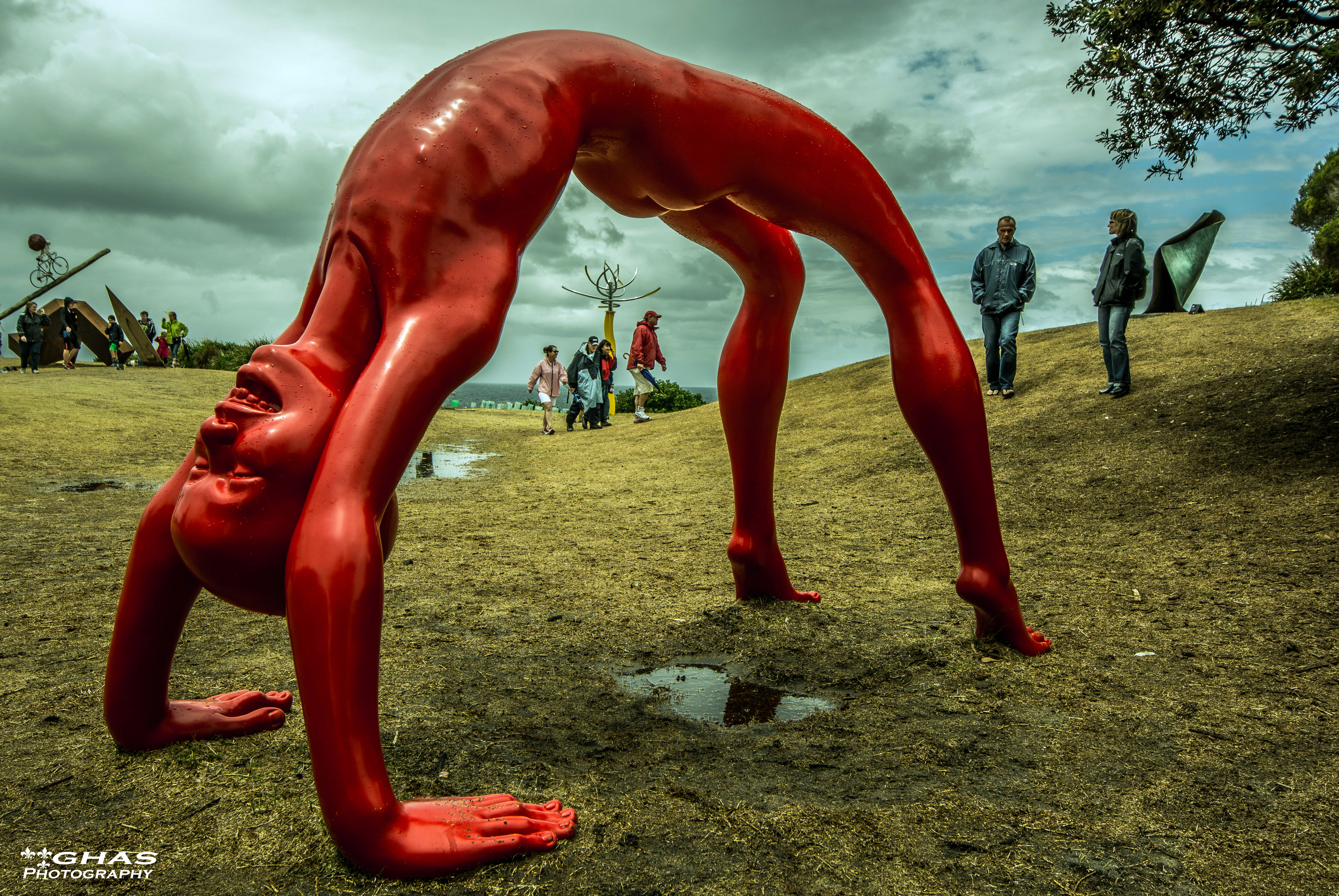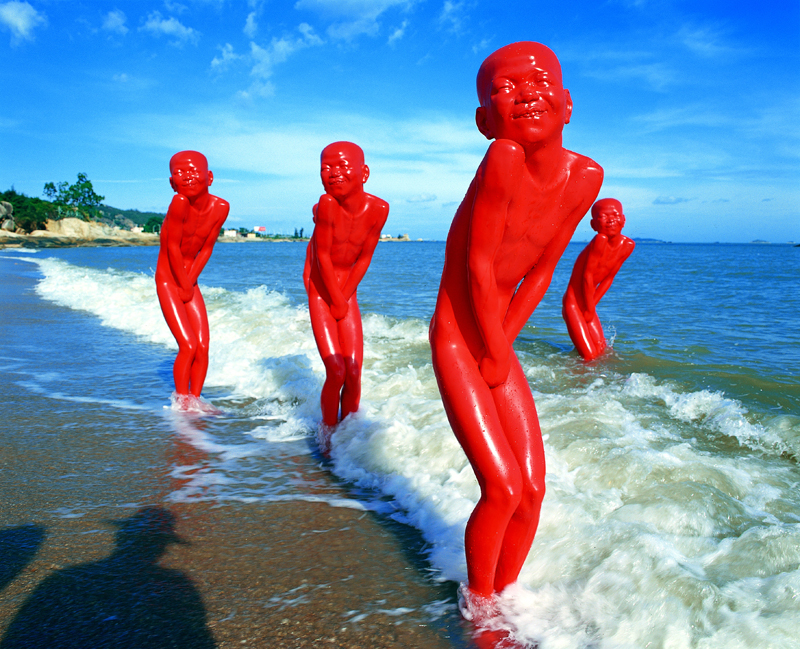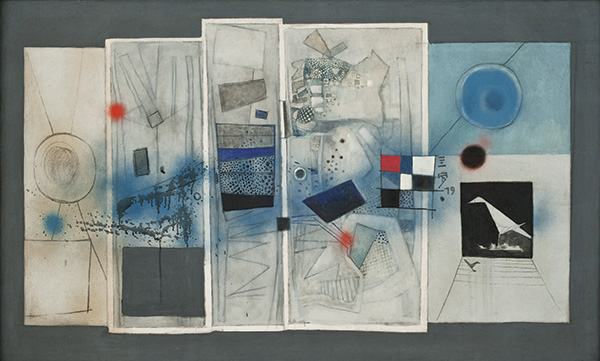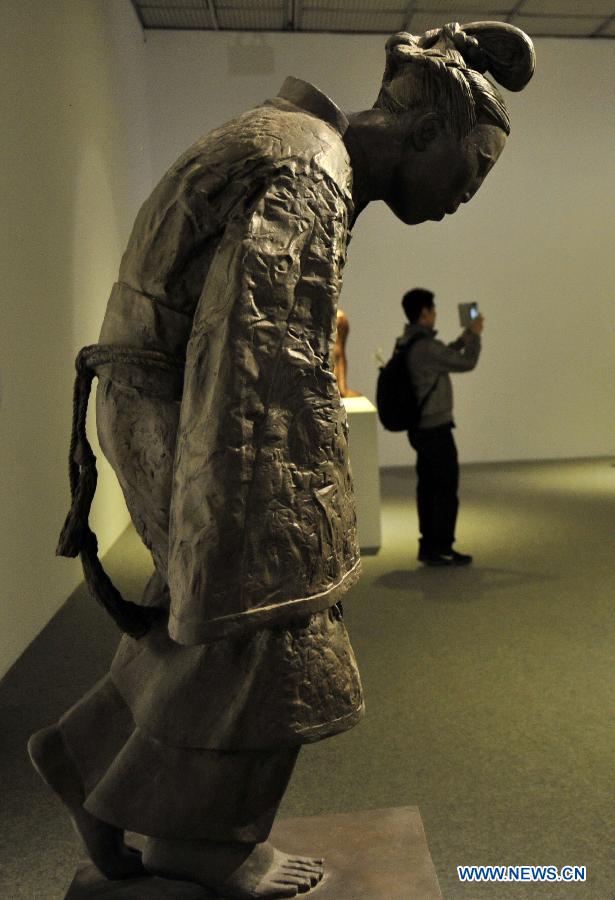All About Artists
Chen Wenling - The Little Red Boy is Having His Moment
The red boy series are unmistakable and instantly recognisable over the years. What's the story behind them?
By Ode To Art
Read the original aticle here: http://www.artdepot.cn/artist/interview/id/32
The Red Boy is having his moment
by Peng De


Chen Wenling's 'Rainbow' at Sculptures by the Sea, Bondi, 2013
The red boy from Wenling Chen's The Red Memory is bright red all over like a raging fire. From the “Red Devils” cheer squad of Korea to the red team shirts in European football, which were very rarely seen in past years, not to mention all kinds of Chinese objects in red; red is everywhere if you look around us. And this very popularity of the red color offers the perfectly reasonable color space for The Red Memory series. In history, the color of red has always been an iconic color and the symbol of auspiciousness in South China. In actual fact, the redness of the body alters the realistic tendency of the artwork, and emphasizes non-physical intentions, while communicating the artist's stand against the snobbery, tension, anxiety, fears and cruelty of human beings in reality. Meanwhile, he unexpectedly expounds the common aspiration of us all - to return to our cherished memories of innocent childhood. He also confronts the query about the precociousness in Chinese culture.
When Wenling Chen first had his group of red boys displayed at Xiamen Pearl Bay Beach in the spring of 2002, thousands of audiences were attracted to them. By the end of the exhibition, the citizens of Xiamen appealed to the authorities to keep them in the city permanently. The Red Memory series at once became a topic in the local media. In the autumn of 2002, Chen's Red Memory was exhibited in the first Triennial of Chinese Arts in Guangzhou. This time, the artwork did not only win praises of the media and audiences again, but also attracted the attention of critics. This group of sculptures of over a hundred naked boys is divided into a few categories, with different postures depicted of them playing by the water. The sculptures were grinded, buffed, and sprayed with red paint, and placed on the beach, tree trunks and lighthouses. ¥450,000 RMB was invested to create this artwork, which made it the most invested piece amongst all the exhibited artworks. It is true that value of an artwork is not necessarily proportionate to the amount invested create it, but in this case, the ship certainly has risen with the tide.
There are thousands of solo and group exhibitions in China every year and only very few artworks stand out from the crowd. Of those that do, they almost all meet one visual need: freshness. Wenling Chen's works belong to a new type of art form, a combination of realistic sculpture, installation, interactive performance art, and trendy art. In terms of sculptures, Chen's work is different from orthodox academism or the novelty of modernism; it is different from the ‘fat' in Maillol's work or the ‘slim' in Giacometti's work. In terms of artwork that combines installation and performance art, Chen's work is also radically distinct - in both artistic perspective and expression - from the avant-garde art that often tends to extremes. This group of red boys is innocent but not evil; they are healthy but not morbid. Visual art in the late 20th century has been flooded with violence and artworks that make a fuss about imaginary illnesses. Wenling Chen's red boys have the character of a lotus, which rises unsullied from mud, and it fulfills our thirst for a new direction of avant-garde art, where art starts to transform from criticism of human nature to a method of building up human nature. Whether amateurs or professionals, academics or avant-garde critics, everyone can find their own focus in Chen's work.
Wenling Chen's group of red boys is named The Red Memory. As a piece of contemporary art, it has ambiguity that leaves it open to interpretation. When people look at these boys, they might think of the phrase “Redboy”, which means newborn baby in classical Chinese literature, but is not so pedantic; they might think of the “Red Kid” in the classic novel The Journey to the West, who is not so wicked; they might think of the Red Guards during the Cultural Revolution, but who are not so violent. People might also look at Xiamen, the military town, and recall its histories of wars and battles, but without any fear whatsoever. For those who know Wenling Chen, they might also associate the red boys to an experience of the artist: In 1996, Xiamen Daily published an article under the title of The Commendable Self-Defense and Rescue, about a young man and woman who were robbed and attacked by the beach. The young man fought back with all his strength, he was terribly injured with dozens of knife wounds, his arteries on both wrists were slit and his entire body was soaked in blood. It was the most violent crime of the city then. This brave young man in the report is the very artist that created the red boys, Wenling Chen, who survived from the brink of death. However, there is not even a glimmer of a grudge in his work, The Red Memory.
In contemporary art, the concept that the artwork possesses is emphasized and this often leads to artworks overloaded with concepts, which makes the audiences tire at a glance. On the contrary, Wenling Chen's work is modest and earthy, without any deliberate concepts. Camouflage and clothing is taken off the bodies and what is left is the straightforward connection between man and nature - the direct dialogue between humans and society. The moderate exaggeration of facial and body language is an emphasis of these two relationships and this group of work can be interpreted as liberation from an overload of concepts, or the idea of concepts being cut down.





